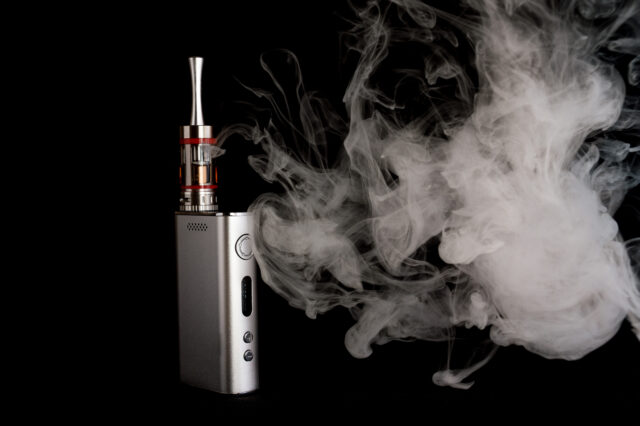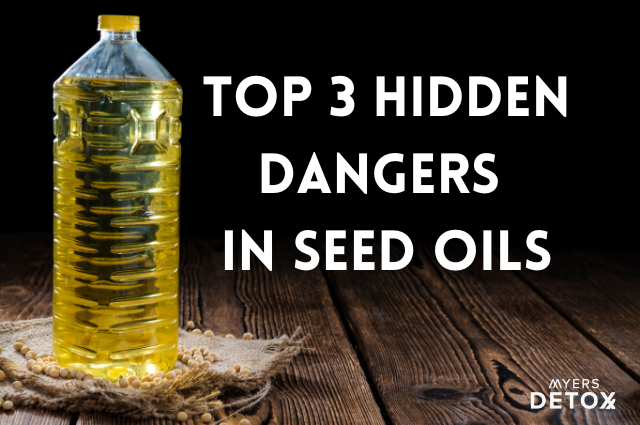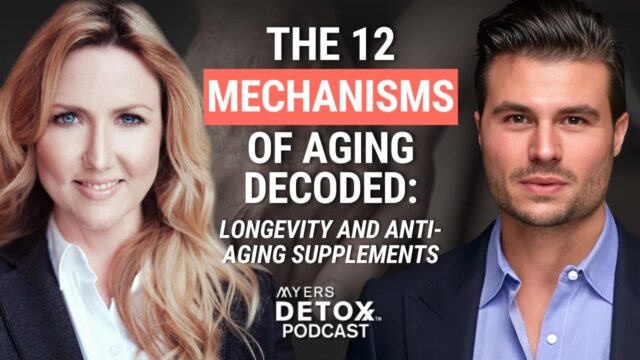Is vaping really a safer choice than smoking cigarettes?
While they came onto the market promising to offer a more healthy way to get your nicotine fix, e-cigs and vapes have come under fire for their potential dangers. We’re learning that although they may contain fewer toxic chemicals overall, vapes come with a whole new set of risk factors that can be just as harmful as smoking.
In this article, we’ll explore:
- In 2019, an outbreak of lung injuries associated with e-cigarettes culminated in 2,807 hospitalizations and 68 deaths in less than one year.
- The dangerous ingredients found in vape fluid
- Why flavored vapes are the most toxic of all
- How vaping is creating new health conditions never seen before
- Why nicotine poisoning is on the rise
- The safest ways to vape (if you must)
How Vapes Affected my Family
I wanted to write this article due to a death that occurred in my family as a result of vaping. I felt compelled to warn others of the dangers of vaping.
My brother’s wife smoked cigarettes for many years. She believed the marketing around vapes that they are a safer alternative to cigarettes and was trying to make healthier choices. Vapes can also be a cheaper alternative to cigarettes, so that was appealing as well. She started buying the cheap flavored vapes you can buy at 7-Eleven. This was a fatal mistake.
Within three years of daily vape smoking, my brother’s wife gradually began developing fatigue, headaches and shortness of breath. Her headaches became so bad she could no longer work. She went to the doctor and was diagnosed with a very aggressive form of lung cancer. She tried everything in vain to regain her health. She died within 4 months of her diagnosis. Undoubtedly, the vaping contributed to her diagnosis, fast demise and death. It was a very painful wakeup call for our family.
My brother’s wife was trying to make a healthier choice and she paid for it with her life. There is not enough information about the dangers of vaping and how to choose a safer alternative to cigarettes.
Additionally, I have recently caught my own 13 year old daughter with a vape and wanted to warn parents of the popularity and the dangers of vaping to your children’s health. The number of young teens going to the hospital, suffering permanent lung damage, and even dying, is shocking and dismaying. Do not ignore the likely potential of your child or teen experimenting with vaping.
Vaping and Your Health: What You Need To Know
E-cigs have been presented to the public as a way to enjoy nicotine without all the harmful compounds of cigarette smoking. But this promise is a little too good to be true.
In fact, in 2016, the Surgeon General released a 300-page report warning about the many dangers of e-cigs[1].
Do vapes contain fewer chemicals than cigarettes? Generally, yes.
Does that mean they’re safe and toxin-free? Not even close.
The Toxic Compounds Found In Most Vaping Products
Below is a list of some of the most common toxic compounds contained in vaping products:
Heavy Metals
Many of the e-cigs on the market are made with materials that contain heavy metals. When the metal coils inside your vape heat up they can release these toxic metals into the vapor, which goes straight to your lungs. The metals found in vapes can include lead, cadmium, tin, arsenic, and nickel[15].
Formaldehyde
As the liquid inside your vape is heated, it begins to release several toxic compounds, including formaldehyde. Formaldehyde is a known carcinogen and can become toxic even at low levels of exposure[2][3].
Acrolein
Acrolein is an herbicide used to kill weeds and is commonly found in the vapor of e-cigs. Studies show that the concentration of acrolein in vapes is 16 times above the World Health Organization threshold and 320 times higher than the Environmental Protection Agency threshold[4].
Propylene Glycol
Propylene glycol (PG) is added to vaping liquid for a smooth smoking experience. It helps to carry flavors, nicotine, and colorants and creates a vapor when heated. This compound is also used commonly in products like antifreeze and paint solvents. The dangers associated with PG include lung irritation and potentially increasing the risk for asthma[5].
Volatile Organic Compounds
Volatile organic compounds (VOCs) are emitted from gasses and are often human-made. In e-cigs, some of the most common VOCs include benzene, acrylamide, and propylene oxide. These harmful compounds can cause damage to your immune system, bone marrow, lungs, hormonal system, and nervous system. Furthermore, many VOCs are known carcinogens[6][7].
Diacetyl
Diacetyl is added to vapes that include flavoring and is the chemical compound behind the infamous lung disease known as “popcorn lung,” or bronchiolitis obliterans[8]. Thus, the flavored vapes are more toxic than the non-flavored ones.
Top 3 Health Dangers Related to Vaping

In addition to all of the health concerns related to the toxins mentioned above found in e-cigs, there are a handful of health conditions that are directly related to vaping. These include nicotine poisoning, popcorn lung, and EVALI (E-cigarette or Vaping Product, Use Associated Lung Injury).
1. Nicotine Poisoning
Until the advent of e-cigs, nicotine poisoning was a very rare condition. Most people don’t directly consume tobacco, and the nicotine levels in the plant are much lower than what we find in liquid nicotine used in vapes.
Today, nicotine poisoning has become a growing problem due to the concentrated levels of nicotine in vape fluid. This is particularly concerning for children due to their small size, but adults are also vulnerable to nicotine poisoning if they overdo it with vaping.
For some perspective, the American Academy of Pediatrics states that as little as one teaspoon of liquid nicotine can be fatal to a 26-pound child. Liquid refills for vapes are sold in quantities that land between two to six teaspoons, levels that could cause serious harm to full-grown adults[9].
Symptoms of nicotine poisoning include nausea, vomiting, abdominal pain, sweating, increased blood pressure and heart rate, tremors, headaches, dizziness, and seizures[10].
2. EVALI
In 2019, an outbreak of lung injuries associated with e-cigarettes culminated in 2,807 hospitalizations and 68 deaths in less than one year. The suspected culprit was a compound called vitamin E acetate, an additive in vaping fluid used to either dilute or thicken the liquid[11].
This inflammatory lung condition is now known as EVALI (E-cigarette or Vaping Product, Use Associated Lung Injury).
What makes EVALI so concerning is that the onset of this condition can begin up to 90 days before symptoms start. Eventually, the lung inflammation can produce wheezing, cough, chest pain, shortness of breath, and other non-respiratory symptoms such as nausea, vomiting, chills, and fever[11].
It’s estimated that around 90% of EVALI cases require hospitalization, and in some cases, this condition can become fatal[12].
Depending on how severe the lung damage is, EVALI may be reversible once the individual stops smoking.
3. Popcorn Lung
Popcorn lung, also known as bronchiolitis obliterans, is a condition that impacts vape smokers using flavored vaping fluids. These fluids contain a chemical called diacetyl, which, when inhaled, causes scarring of the tiny air sacs (bronchioles) in the lungs. Over time, this scarring causes obstructive lung disease due to the thickening and narrowing of the airways[13].
The symptoms of popcorn lung are similar to those of COPD ( chronic obstructive pulmonary disease), such as coughing, wheezing, and shortness of breath. Unfortunately, once you have this condition, there is no reversing it. While you can mitigate further damage by quitting smoking, the damage to your lungs is permanent. And if left untreated, popcorn lung can become fatal[14].
Sadly, there are a shocking number of teens and young adults currently using vapes, and putting themselves at risk for these conditions. In fact, a 2022 report from the FDA showed that about one in ten middle and high school students are currently using e-cigarettes. That’s more than 2.5 million children and young adults in the US
And of those that are using e-cigs, around 85% are using flavored vapes[16].
As of 2020, there have been nearly 3,000 vape-related hospitalizations, and you can bet that a much greater number of teens are on their way to serious lung damage since the symptoms of conditions like EVALI can take a while to show up[17].
Can You Vape Safely?
While there are no “safe” vaping options available, at least at this point, there are a handful of factors to keep in mind if you’re not ready to quit altogether.
When hunting for a new vaporizer product, keep the following do’s and don’ts in mind:
- Don’t buy the cheapest pens on the market; in an industry where standards and regulations are still being hammered out, you’re likely to get what you pay for.
- Avoid flavored vapes.
- Buy organic tobacco vapes.
- Don’t buy vapes made with Teflon.
- Buy vapes with a temperature control monitor.
- Buy vapes with a Grades 1 or 2 titanium coil (not an alloy with iron).
- Don’t buy from any vendor that refuses to provide composition test results. Do ask vendors to provide the results of a composition test from an independent testing laboratory for their materials.
Avoid vaping fluids that contain flavoring. Without the flavoring additives, you reduce your risk for popcorn lung, which is one of the most devastating side effects of e-cigs. Plenty of flavorless options exist, so it shouldn’t be hard to find an alternative if your current go-to is a flavored vape fluid.
Companies like Real Organic Vapors sell organic liquid nicotine, and use only USDA Organic certified ingredients. Their ingredients are also tested for a range of contaminants, and the equipment they use is all stainless steel, which mitigates the risk of heavy metal exposure.
Look for a vape that has a built-in temperature control monitor. While this won’t omit all harmful chemicals produced from high-heat vapor, it will certainly mitigate the number of compounds produced. Built-in temperature controls and chipsets allow for temperature protection and wattage control that you wouldn’t get otherwise.
And finally, invest in vape fluids from trusted manufacturers with transparent ingredient labeling. A range of harmful toxins can be added to vape fluids, so finding a company that commits to creating a clean fluid is your best bet.
Takeaway
So, is vaping really healthier than smoking cigarettes? The jury is still out. But my personal opinion is that vaping the cheap, flavored vapes is MORE toxic than cigarettes and can bring on symptoms and illness far faster than cigarettes.
There are far more toxic compounds in cigarettes – there can be 4000 different chemicals and heavy metals in cigarette smoke. But while e-cig vapor is overall less toxic for your lungs and body than cigarette smoke, the compounds and flavorings in e-cig vapor are just as damaging and can cause health issues much faster as a result.
Furthermore, some concerns come with vaping due to the liquid ingredients in vapes, which you wouldn’t be dealing with if you were smoking a cigarette.
Ultimately, the ideal case would be not smoking at all, but if you’re not ready to put down the cigs, your best bet is to look for clean vaping fluid free of flavor additives or taking nicotine pills or gum.










